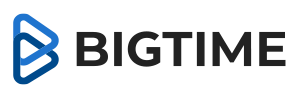Select up to 2 products
Compare Features
Feature List |  Weekdone |  monday.com Software |  BigTime Software | BQE CORE |  Smartsheet |
|---|---|---|---|---|---|
Time Tracking | |||||
Task Management | |||||
Reporting | |||||
Budget Management | |||||
Resource Allocation | |||||
Employee Management | |||||
Mobile App | |||||
Project Templates | |||||
Project Scheduling | |||||
Dashboard |
Make decisions with real reviews from real users
Top 10 Weekdone Alternatives
Weekdone is a goal-setting and team alignment tool that helps businesses implement the Objectives and Key Results (OKR) framework. Using this software, teams can set clear goals, track progress, and ensure alignment across all levels of the organization. Weekdone's features include weekly check-ins, feedback loops, and visual dashboards, which have been shown to greatly improve team productivity and focus.
That said, some users have noted that while Weekdone is effective for small to mid-sized teams, it may not scale as efficiently for larger enterprises with complex needs. Also, since most of its focus is on weekly breakdowns and check-ins, it may not offer the flexibility some teams need for longer-term strategic planning. This has led many organizations to explore alternative solutions.
In this guide, we will share the top 10 Weekdone Alternatives and explain each one’s strengths and weaknesses, pricing details, and how they compare to Weekdone. So, let’s get into it.
TL; DR: What’s the best alternative to Weekdone? Among all options, Tability stands out as the best Weekdone alternative because it is simple, easy to use, and keeps goal tracking clear and smooth.
Our Top 10 Weekdone Alternative Recommendations
1. Tability
Best For: Startups and small teams
Overall Rating: N/A
Free Trial: 14-day free trial available
Tability is a lightweight goal-tracking platform built around OKRs. It is designed to make progress visible and habitual. The platform encourages teams to check in weekly, set clear outcomes, and connect daily tasks to bigger goals, all with reminders and smart dashboards. It also integrates with tools like Jira, Slack, ClickUp, and others, so your goals live near the work you are already doing.
Compared to Weekdone, Tability stands out for its focus on simplicity and ease of use. Instead of adding extra processes, Tability removes friction by keeping updates lightweight and progress tracking automatic.
Its AI-powered OKR support and seamless integrations give it a modern edge, making it faster to adopt and less time-consuming to maintain. So, for teams that want clarity and momentum without extra process overhead, Tability is the way to go.
What Are The Pros And Cons Of Tability?
How Much Does Tability Cost?
Businesses can choose from the following packages:
- Basic: $6/seat/month
- Premium: $10/seat/month
- Enterprise: Custom pricing
Disclaimer: The pricing is subject to change.
2. Profit.co
Best For: Manufacturing, media and marketing, technology, and software
Overall Rating: 4.4 (9 Reviews)
Free Trial: 30-day free trial available
Profit.co is a full-featured OKR and strategy execution tool that helps companies bridge strategy and daily work. It offers in-built AI and templates for creating OKRs fast, 400+ pre-built KPIs, customizable dashboards, and strong integrations with tools like Slack, G Suite, Zapier, etc. It also supports task and performance management, with features like check-ins, reviews, and employee engagement to make sure everyone knows how their work contributes to company goals.
Profit.co is a good alternative to Weekdone because it gives teams more control and flexibility when tracking goals. You can add weight to key results, break them into smaller parts, or set stretch targets to push beyond the basics.
It also lets you quickly turn KPIs into initiatives without starting from scratch, which is useful when business priorities shift. On top of that, Profit.co’s dashboards are highly updated as the software offers real-time reporting. That said, if scalability and advanced features are your needs, Profit.co is a good choice.
What Are The Pros And Cons Of Profit.co?
How Much Does Profit.co Cost?
Profit.co offers custom pricing tailored to the size, features, and support needs of your organization.
Disclaimer: The pricing is subject to change.
3. Leapsome
Best For: Electronics, technology, software development, consulting
Overall Rating: 2 (1 Review)
Free Trial: 14-day free trial available
Leapsome is a people-first platform that combines OKRs, performance reviews, feedback, learning, and employee engagement into one system. It lets teams set goals with AI suggestions, visualize goal hierarchies (via goal trees), and link personal, team, and company objectives. Its strength lies in making these people and performance tools talk to each other rather than keeping them siloed.
Compared to Weekdone, Leapsome cares more about development and goals being in one place. Leapsome offers built-in 360° reviews, continuous feedback, and learning modules that are directly tied to your OKRs. This way, performance conversations are naturally informed by goal progress.
It also gives you advanced goal control, like weighting key results, approving goals, and AI help, to generate good KRs quickly. If your organization wants deep people practices along with goal execution (not just setting goals), Leapsome offers a more holistic solution than Weekdone.
What Are The Pros And Cons Of Leapsome?
How Much Does Leapsome Cost?
Leapsome uses custom modular pricing, so customers pay only for the modules they need. Some of the modules offered are:
- HRIS
- Reviews
- Surveys
- Goals
- Learning
- Compensation
- Time tracking
Disclaimer: The pricing is subject to change.
4. Peoplebox
Best For: Fintech and technology sectors
Overall Rating: N/A
Free Trial: Not available
Peoplebox is an all-in-one platform that brings OKRs, performance reviews, feedback, and engagement into a single system. It connects with tools like Slack, MS Teams, and HR systems, so goals, reviews, and conversations all live in your flow. Because it handles both the people side and goal side, you don’t need separate systems for feedback or reviews.
What sets Peoplebox apart from Weekdone is how it presents and supports progress. You can build customizable dashboards with charts, KPIs, and narration, all auto-filled from native integrations, making reporting effortless and visually clear.
It also invests heavily in user adoption, offering onboarding guides, customer support, and tools to turn team members into OKR champions. It promotes accountability and transparency through dashboards and individual performance tracking.
What Are The Pros And Cons Of Peoplebox?
How Much Does Peoplebox Cost?
The vendor has several tiered plans depending on the modules and features you need, with prices listed on an annual billing basis.
- Talent Management: $7/user/month
- OKR Platform: $8/user/month
- Full Suite – Professional: $12/user/month
- Full Suite – Premium: $15/user/month
- Enterprise Plan: Custom pricing
Disclaimer: The pricing is subject to change.
5. Lattice
Best For: Fintech, life sciences, insurance, technology
Overall Rating: 4.7 (49 Reviews)
Free Trial: 7-day free trial available
Lattice HR gives companies a way to tie their goals directly to how their people grow. Instead of just tracking OKRs, it connects objectives with feedback, reviews, and career development, so teams stay aligned while individuals keep improving. With real-time tracking, 1:1 support features, and a clear view of both company goals and employee success, Lattice makes OKR management part of a much larger people-focused system.
What makes Lattice stronger than Weekdone is its depth. Weekdone is mainly about weekly reporting and OKR tracking, but Lattice goes further by linking those goals to performance reviews, feedback cycles, and employee development. This makes it a better fit for companies that want OKRs not only to measure progress but also to foster long-term growth.
What Are The Pros And Cons Of Lattice?
How Much Does Lattice Cost?
Lattice uses a modular pricing model, which is as follows:
- Talent Management: $11/seat/month
- HRIS (Core HRIS): $10/seat/month
Disclaimer: The pricing is subject to change.
6. Qandle
Best For: Healthcare, retail, education, finance
Overall Rating: N/A
Free Trial: Free trial available
Qandle OKR software eliminates the traditional spreadsheets mess and gives teams a structured way to set and follow through on goals. Companies can create organization-wide, team, or individual OKRs, break them down into smaller steps, and track progress in real time. Features like ready-to-use templates, AI-suggested objectives, flexible tracking options, and live dashboards further ease the goal-setting process.
Compared to Weekdone, Qandle offers more flexibility and depth by splitting big goals into actionable and manageable steps. It provides smart alerts, KPI libraries, customizable dashboards, and multiple ways to measure success (percentages, progress bars, or boolean indicators).
It also helps spot risks early, keep objectives measurable, and guide teams with built-in reminders. For companies that want OKRs to actively provide results instead of just being updated weekly, Qandle is the right choice.
What Are The Pros And Cons Of Qandle?
How Much Does Qandle Cost?
The vendor offers the following packages with a base price per company $38/month:
- Regular: $5.0/employee/month
- Plus: $9.0/employee/month
- Premium: $11.5/employee/month
- Enterprise: Custom pricing
Disclaimer: The pricing is subject to change.
7. Mooncamp
Best For: Finance, education, hospitality
Overall Rating: N/A
Free Trial: 14-day free trial available
Mooncamp brings everything together so teams can plan, execute, and review their strategy in one platform. It supports OKRs at every level, lets companies customize goal cycles, and keeps progress transparent across the organization. With dashboards, real-time tracking, and integrations with tools like Slack and Microsoft Teams, Mooncamp makes it easier to connect goals with daily work.
When compared to Weekdone, Mooncamp seems to have a broader approach. It embeds OKRs directly into existing workflows through tools like Salesforce and Power BI. Instead of relying on manual updates or siloed check-ins, Mooncamp automates progress tracking and reporting, making sure data is always fresh. The system essentially adapts to your personalized approach. Add to that its flexible customization and hands-on expert guidance, and Mooncamp becomes the stronger choice for companies that want OKRs to scale.
What Are The Pros And Cons Of Mooncamp?
How Much Does Mooncamp Cost?
Mooncamp offers the following pricing plans, which are billed annually:
- Essential: €6/user/month
- Professional: €10/user/month
- Enterprise: Custom pricing
Disclaimer: The pricing is subject to change.
8. Perdoo
Best For: Technology and SaaS, financial services, e-commerce
Overall Rating: 4.3 (49 Reviews)
Free Trial: Free plan available
Perdoo is a cloud-based OKR and performance management platform that features strategic planning, OKR tracking, KPI management, weekly check-ins, 1:1s, and reporting all in one tool. This software proves to be an invaluable toolkit for anyone running a strategy execution program, as you can easily visualize how your strategy links to everyday work.
When you put Perdoo side-by-side with Weekdone, Perdoo goes a step further by integrating full strategy execution. This means that, instead of just showing weekly updates, it also connects them to your broader organizational goals and KPIs. For example, Perdoo’s ‘Strategy Map’ illustrates how strategic pillars, company objectives, OKRs, and KPIs all interconnect. This helps leadership and teams see the big picture more clearly.
Also, Perdoo supports both OKRs and KPIs natively within one system, while Weekdone emphasizes OKRs and links KPIs as metrics to those goals. Because of these features, many find that Perdoo is a far better choice when you want your tool to drive both daily execution and long-term direction.
What Are The Pros And Cons Of Perdoo?
How Much Does Perdoo Cost?
Perdoo’s pricing is user-based and billed annually. The plans include:
- Free: €0/user/month (up to 5 users)
- Premium: starting at $9/user/month
- Supreme: starting at $11/user/month
Disclaimer: The pricing is subject to change.
9. Quantive
Best For: Technology, telecommunications, agriculture, retail
Overall Rating: N/A
Free Trial: 30-day free trial available
Quantive is an OKR and goal-tracking platform designed for businesses to align their teams with strategic initiatives. It features flexible OKR management, AI-powered goal tracking, KPI linking, and collaborative tools (brainstorming, check-ins, and engagement features) to keep employees motivated and accountable. With its StrategyAI capabilities, Quantive makes progress tracking easier as it throws light on how daily tasks connect to company-wide objectives.
Compared to Weekdone (which focuses mainly on OKRs and weekly check-ins), Quantive goes beyond. It links OKRs directly to KPIs, so you know precisely if you are hitting your targets, and adds AI-powered updates that make tracking easier. This means you get a clear picture of how everyday work leads to bigger goals (not just weekly summaries). Simply put, Weekdone keeps you on track week by week, but Quantive shows you the full strategic picture.
What Are The Pros And Cons Of Quantive?
How Much Does Quantive Cost?
Quantive’s StrategyAI pricing starts at $6/seat. The platform also offers plans tailored to organizations with different team sizes and unique workflows:
- Teams
- Business
- Enterprise
Disclaimer: The pricing is subject to change.
10. Betterworks
Best For: Enterprise, technology, healthcare
Overall Rating: N/A
Free Trial: Not available
Betterworks is a comprehensive performance management platform designed to make goal-setting and tracking part of everyday work. It offers an OKR framework alongside continuous performance conversations, 1:1 meetings, and employee engagement tools. The platform also integrates with tools like Slack, Salesforce, and Jira, so it’s easier to connect performance data across platforms.
Betterwork is a far better choice than Weekdone, as the former offers a full performance ecosystem. This means it tracks OKRs and also connects them to real-time performance. It combines OKRs with performance calibration to ensure fair and consistent evaluations. It also offers continuous coaching and conversations, so feedback happens all the time, not just during reviews. On top of that, Betterworks includes 1:1 meeting tools to make everyday meetings more productive, and employee engagement tracking to keep teams motivated and growing.
What Are The Pros And Cons Of Betterworks?
How Much Does Betterworks Cost?
The vendor offers the following plans at custom pricing:
- Enterprise (Minimum 2500 employees)
- Mid-Market (Minimum 500 employees)
Disclaimer: The pricing is subject to change.
How We Chose Our Weekdone Alternatives?
Here is how we curated this fine list of Weekdone alternatives:
Selecting The Best Alternative To Weekdone
While Weekdone is a reliable tool for goal setting and team alignment, it may not meet the needs of every organization. Choosing the right alternative requires careful evaluation, as each platform offers different features, pricing plans, and customization options.
Consider your team’s size, workflow requirements, and budget, and compare pricing structures carefully. Schedule demos or trials to explore each tool’s capabilities and usability before making a decision. With this approach, you can select a Weekdone alternative that not only fits your immediate needs but also supports your long-term productivity and growth goals.







